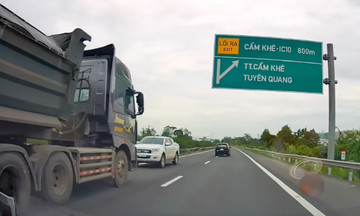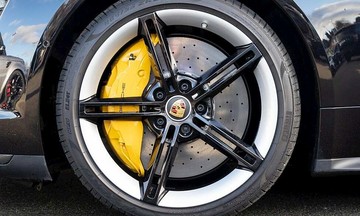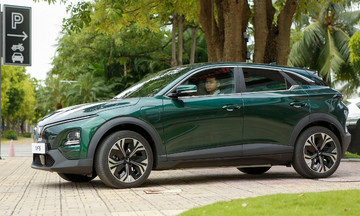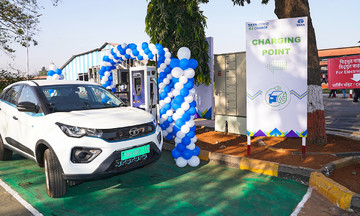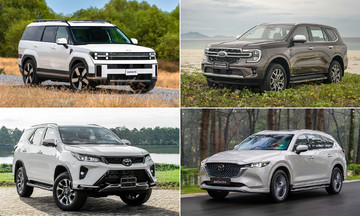Chinese automakers are outpacing international rivals in developing driver-assistance technology, aiming to attract consumers eager for innovation. However, speed isn't the only priority.
Regulators are finalizing new safety rules for these systems as Beijing increases oversight following a March accident involving a Xiaomi SU7 sedan. The accident, which resulted in three fatalities when the car hit a median barrier seconds after the driver took over from the driver-assistance system, has prompted a review of the technology.
While Chinese officials aim to prevent automakers from overselling the capabilities of these systems, they're also balancing innovation with safety to ensure domestic automakers don't lose market share to American and European competitors.
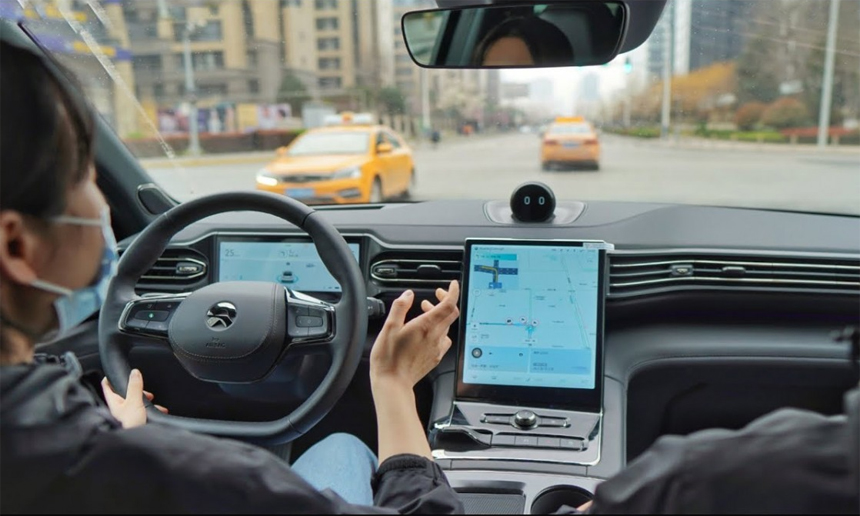 |
A Nio vehicle, one of the automakers participating in public testing of driver-assistance technology. Photo: Nio |
A Nio vehicle, one of the automakers participating in public testing of driver-assistance technology. Photo: Nio
Establishing clear regulations for driver-assistance technology without hindering progress could give China's industry a competitive edge, analysts say. This contrasts with the US market, where autonomous vehicle companies have expressed frustration over the lack of government regulations for validating and testing the technology.
Current Chinese regulations permit automated steering, braking, and acceleration under certain conditions while requiring drivers to remain attentive. Marketing terms like "intelligent" and "automatic" are prohibited.
The new regulations will focus on hardware design and software that monitors driver awareness and their ability to regain control promptly. To this end, regulators enlisted Dongfeng and tech giant Huawei to help draft the new rules and sought public comment for a month, ending 4/7.
Simultaneously, Chinese automakers are being encouraged to rapidly deploy more advanced, level-3 driver-assistance systems, which allow drivers to take their eyes off the road in certain situations. Level 3 is the midpoint on the industry’s automated driving scale, ranging from basic features like cruise control at level 1 to full autonomy in all conditions at level 5.
The Chinese government selected Changan as the first automaker to begin level-3 validation tests in April, but plans were paused after the Xiaomi accident.
Sources indicate Beijing still hopes to resume such tests this year and approve the country's first level-3 driver-assistance vehicles in 2026.
Driver-assistance systems are viewed by industry analysts as the next major battleground in China's fiercely competitive car market.
Over the past decade, level-2 systems have proliferated in China, including Tesla’s full self-driving (FSD) system and the Xiaomi feature involved in the March accident. These capabilities range from automatically maintaining a safe distance from other vehicles on highways to handling most tasks on busy urban roads, under driver supervision.
Automakers have reduced hardware costs, enabling them to offer level-2 features at little to no extra cost. BYD has deployed its God's Eye driver-assistance software free across its entire product line. Research firm Canalys estimates that over 60% of new cars sold in China this year will have level-2 features.
In its push for driver-assistance technology and ultimately fully autonomous vehicles, Beijing seeks to replicate its rapid ascent in becoming the world's electric vehicle powerhouse.
Last year, the Chinese government allowed nine automakers to conduct public road tests to accelerate the adoption of self-driving vehicles. These included brands like BYD, Nio, Changan, GAC, SAIC, and fleet operators such as ride-hailing companies.
While promoting level-3 technology, Chinese regulators are also increasing scrutiny by holding automakers and parts suppliers liable if their systems malfunction and cause accidents. Legislation passed in the UK in 2024 took a similar approach to liability.
At the Shanghai Auto Show in April, several companies showcased their progress in deploying level-3 capable vehicles. Huawei announced its readiness to introduce a level-3 system for highways after over 600 million km of simulated testing. Videos depicted drivers and passengers singing karaoke while the vehicle drove itself.
Geely's Zeekr brand unveiled its premium 9X SUV equipped with level-3 software, which the automaker said was ready for mass production in the third quarter if regulations allowed. Zeekr is also applying to join the second round of testing for level-3 validation.
Meanwhile, traditional automakers at the Shanghai Auto Show, such as Mercedes and Volkswagen, indicated they were pushing their most advanced driver-assistance features but had yet to cross the level-3 liability threshold.
Analysts note that achieving this is a challenge as they are at a cost disadvantage compared to their Chinese rivals.
Mercedes' Chief Technology Officer, Markus Schaefer, told Reuters that while chip prices and computing power are decreasing, the additional safety measures required for level 3 are significantly more expensive.
My Anh



